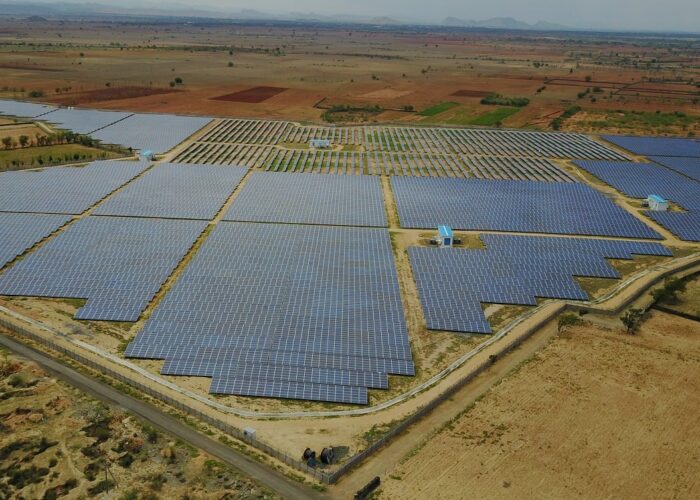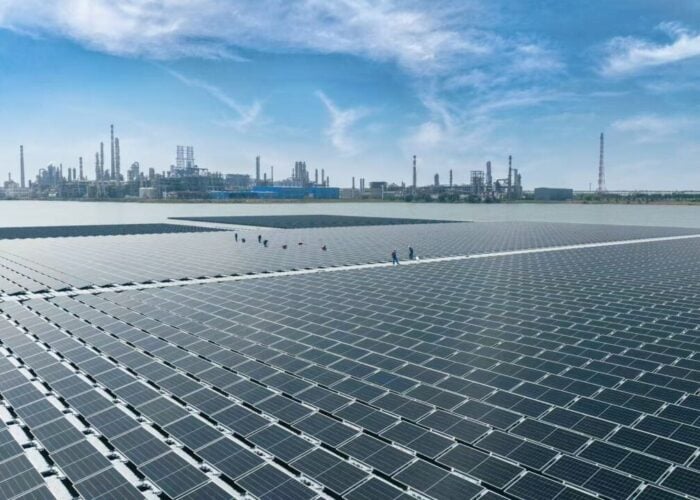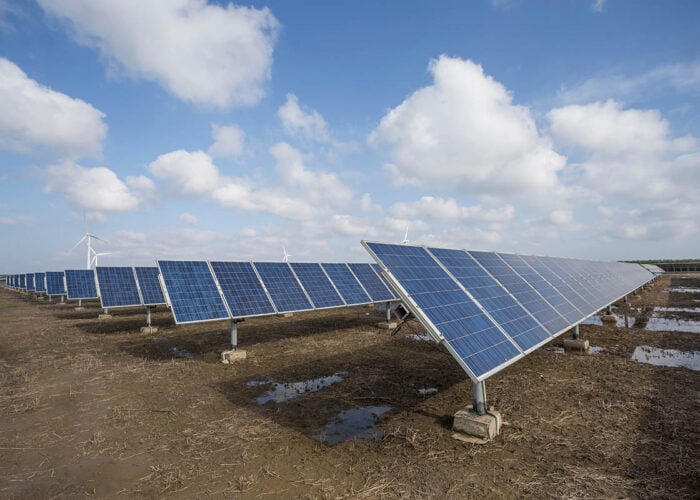As the nights draw in and the sun sets on 3.2GW of solar on roofs or in the desert installed during this record-breaking year, 2012 could well be seen as a turning point for the US industry.
I won't make predictions. But I'll guess that Solyndra is probably one word you're unlikely to hear much about in 2013. Republican attempts to prove the company’s $534 million Department of Energy (DoE) loan was a glaring example of President Barack Obama's “crony capitalism” collapsed despite a show trial and 300,000 subpoenaed documents. Republicans admit that they are well short of any evidence that the decision to back Solyndra was politically motivated.
Unlock unlimited access for 12 whole months of distinctive global analysis
Photovoltaics International is now included.
- Regular insight and analysis of the industry’s biggest developments
- In-depth interviews with the industry’s leading figures
- Unlimited digital access to the PV Tech Power journal catalogue
- Unlimited digital access to the Photovoltaics International journal catalogue
- Access to more than 1,000 technical papers
- Discounts on Solar Media’s portfolio of events, in-person and virtual
California Congressman Darryl Issa appears a lone wolf in trying a new route to attack the government over Solyndra by suggesting that the loan plus tax losses could push the cost to taxpayers to $850 million. But most Republicans have dropped their weapons.
However, others seem willing to take up arms on their behalf to heap criticism and pressure on the industry from surprising places – more of that later.
While the solar industry thanks its lucky stars that Obama, not Mitt Romney, will be roasting chestnuts on the White House fire this Christmas, the overall US economy appears to be improving. The $800 billion stimulus package that was introduced with the American Recovery and Reinvestment Act 2009 cannot quite be characterised as the gift that keeps on giving. But it has been a welcome cushion in challenging times.
Time magazine reporter Michael Grunwald probably knows more about the stimulus package than anyone, except perhaps Vice-President Joe Biden. Solar installations increased 600% since the stimulus and on the day that the government announced that the Investment Tax Credit would temporarily be replaced by the 1603 cash grant, the chief of Abengoa pledged a $6 billion investment in the US, claims Grunwald.
In the New New Deal, Grunwald has meticulously investigated the $800 billion stimulus package and has found that the $90 billion allocated to clean energy is in fact clean. Despite his Washington contacts book, Grunwald found no Watergate, not even a Solyndra-gate.
“It's unfortunate, but it's not a scandal,” he said during a Vote Solar presentation earlier this year.
Grunwald began with an anecdote about how he had written a Time magazine cover story about energy efficiency. “It was the worst selling issue of 2008, possibly of the millennium,” he said. Pitching the story of the stimulus to his editors was a hard sell. Editors, like Republicans, would probably prefer a scandal to lift sales.
He did interview several people in the DoE's loan guarantee department, however, and found that the programme was not without its own internal conflicts.
“The first thing to remember is that the loan guarantees were a bipartisan programme that was started in 2005 by President Bush. Somehow on January 20 2009 [Obama's first inauguration] it became 'radical socialism'.”
One of Solyndra's investors was the Democratic donor George Kaiser. But Grunwald points out that another one of Solyndra's major investors was a partnership associated with the right-leaning Walton family.
When Obama took office, it was not his administration that put the Solyndra loan application at the top of the pile. President George Bush had started the loan programme in 2005. It was Bush's loan team that left the application at the top of the in-tray having failed to authorise it in 2008.
“[But] there was some internal debate,” said Grunwald. “I interviewed one guy at DoE who started work in April [2009]. The first thing he found out was that Solyndra had gotten the first loan. He had looked at Solyndra in its private sector capacity and said, ‘Oh, no!’
“There were definitely some doubters who felt that Solyndra's technology, as brilliant as it was, was just too expensive. I interviewed the person who made the decision on the Solyndra loan and he swears that there was no political interference in that decision.”
Grunwald also says that there is very little that has been taken fraudulently – only $10 million of the $800 billion.
Grunwald's work should in many ways silence the doubters, finally. That would be especially useful to free up time for the job that representatives are elected to do. Rather than a formally declared all-out war, we may see the odd skirmish and even the occasional guerilla attack.
In September, I wrote about a baffling report in the Los Angeles Times, which seemed to suggest that it was OK for companies to make money from public-private partnerships – unless they were solar companies.
Th LA Times returned to the subject last month with a piece that was critical of the inflated economic promise of BrightSource's $2.7-billion Hidden Hills solar project. This was a properly put together piece of journalism that raised real concerns within San Bernadino county.
“For example, the $2.2-billion Ivanpah solar project at the county's eastern border has agreed to pay $377,000 annually, but that may not be enough to cover the county's new costs related to the plant,” the report said. “The county doesn't know how much solar plants will drain from its budget because the projects are being planned and approved too quickly for adequate analysis, officials say.”
BrightSource responded angrily by pointing out that the Ivanpah project is estimated to generate $250 million in construction wages and $650 million in total wages over its 30-year life.
“More than 80% of these workers are from the local union halls in San Bernardino and Riverside Counties. Many of these trade workers were unemployed for years following the economic downturn in 2008,” wrote BrightSource’s Keely Wachs.
Relief at being in work was one of the most consistent responses I had from workers on site when I visited in August.
Wachs continues with a tear down of the LA Times' fact selection: “The story points out that just 5% of the construction jobs at Hidden Hills would be filled by Inyo County residents.
“Yet the story ignores the fact that the primary reason that 5% of the construction workers come from Inyo County is because it has a small population. According to the most recent census, Inyo County has 18,000 residents. Compare this with the 2 million residents in San Bernardino County where Ivanpah is being built.”
So what's behind these journalistic attacks? Is it genuine inquiry, or is there a force of darkness casting a shadow on the Golden State's fastest growing industry?
Some time ago, it was suggested to me that there may be a connection between the LA Times' editorial direction and its owners, the Tribune Company, publishers of the Chicago Tribune, which is getting ready to emerge from Chapter 11 bankruptcy.
Tribune's chairman is Sam Zell who made his fortune in real estate. Zell and his companies, including Equity Group Investments, make regular payments to Republican politicians and rightwing think-tanks. Last year, he made a $100,000 donation to American Crossroads, Karl Rove's super PAC (and we all know how that worked out) and he made several more donations to Restore our Future, Romney's campaign super PAC.
There may be no connection at all between Zell's political bent and the LAT's attacks on solar. After all, it's quite hard to understand why a real estate billionaire would want to defend itself against solar.
But to get the measure of the man, dubbed the human wrecking ball, you need only watch these videos. The war of 2012 might be over. But there are new battles to come in 2013, possibly from surprising places, as the solar industry continues its fight to win the war of public opinion.






